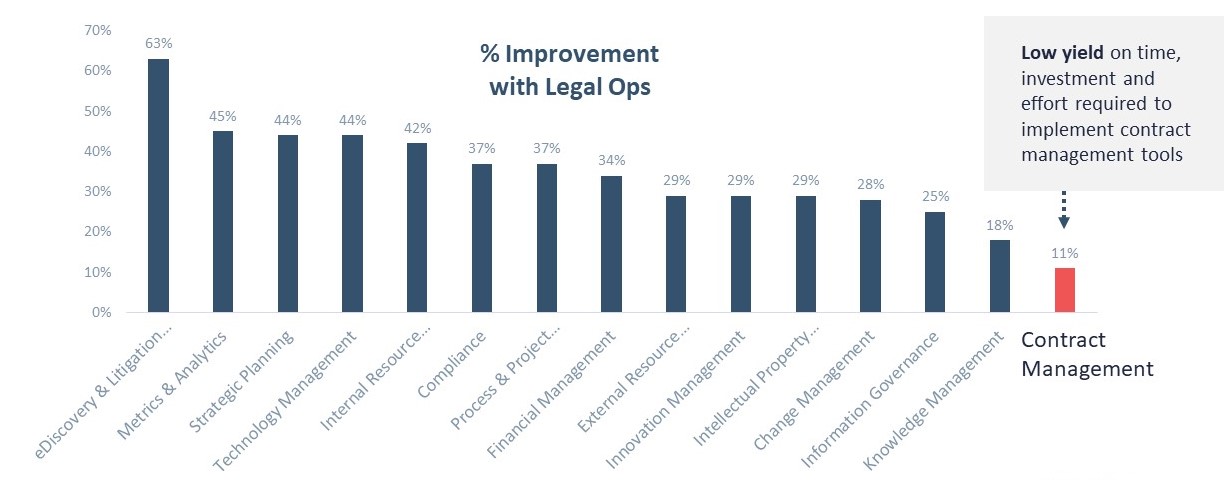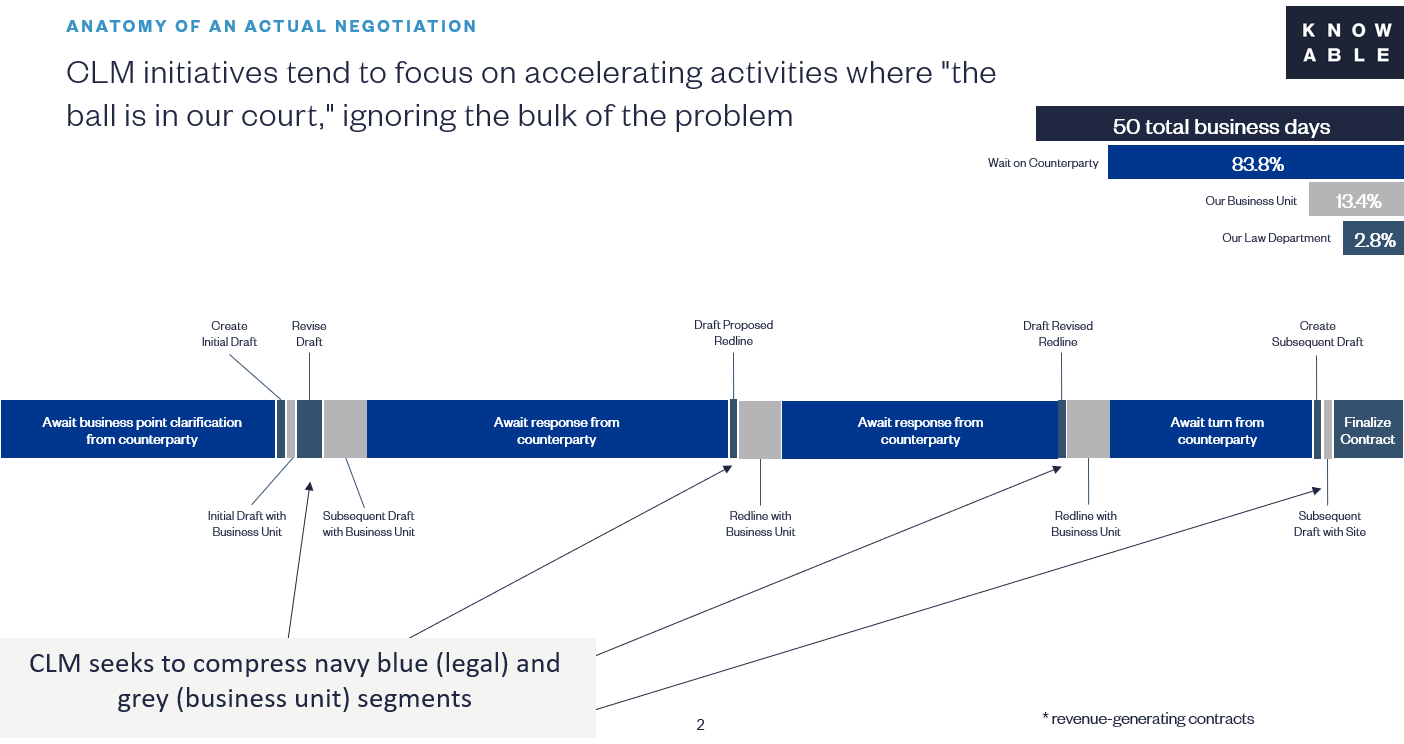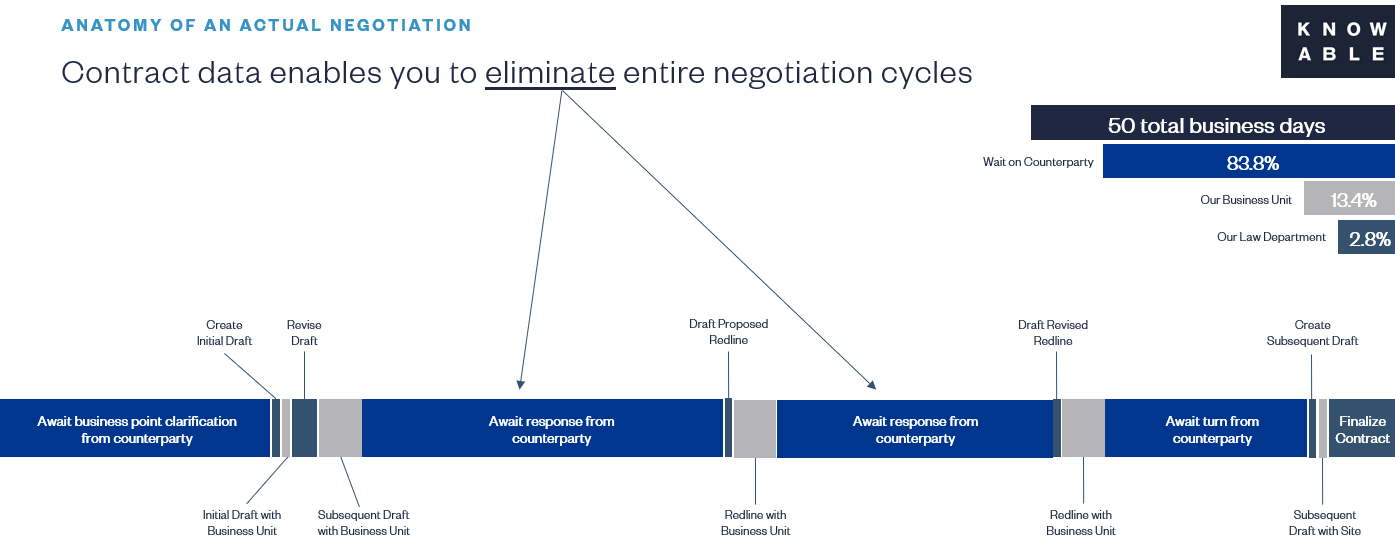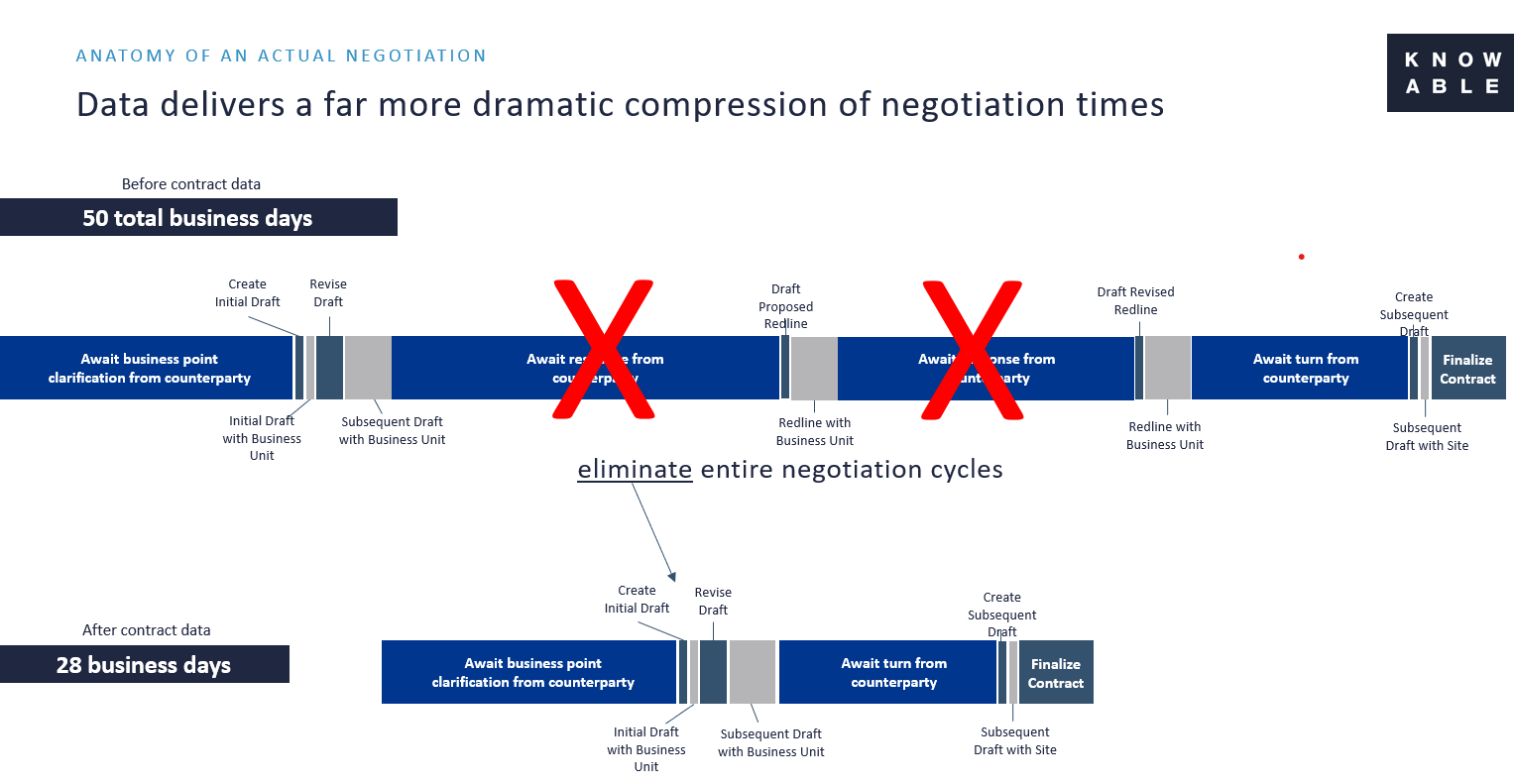Harness data from existing contracts to achieve faster, business-focused decision-making.
Legal and commercial teams are under relentless pressure to reduce contract negotiation timelines. Slow negotiations are why legal departments are often seen as business bottlenecks. More to the point, this is a very expensive problem. A few extra weeks of contracting time translates into tens or hundreds of millions of dollars in lost revenue at big enterprises. The motivation to move faster is powerful.
Faced with this pressure, many companies have embarked on multi-year CLM implementation journeys, with varying degrees of success. CLM is valuable and necessary, but it’s also challenging, requiring significant stakeholder alignment and behavioral change. Of all the categories of legal technologies, CLM is the segment where users report the lowest levels of success.

Unfortunately, much of this effort is misdirected. When it comes to negotiating revenue-generating contracts, CLMs aren’t structured to effectively compress contracting cycles in the most material way. To understand why, you must first examine the anatomy of a contract negotiation.
That’s exactly what we did at Knowable. We conducted a slew of time and motion studies with our large enterprise clients to better understand where they spend their time, and the results led to an epiphany that can save time and money.
Contract Negotiation with a CLM
Here’s an example of a real negotiation timeline for a large financial services company. What stands out? All that royal blue. 84% of the time is spent waiting for the counterparty to respond.

This appears to be true across industries, as long as you’re dealing with revenue-generating contracts (time pressure on vendor-side contracting cycles is, understandably, less of a concern).
So, when you invest in CLM, you’re attempting to compress only the small parts of the timeline that you control (the grey and royal blue bars above). This is a worthy undertaking, but in the best case, your results are unlikely to be material. Even if you’re doing your part more efficiently, most of the wasted time is on the other side of the fence.
Where does that leave us?
Contract Negotiation with a Contract System of Record (CSOR)
Looking at the data, it’s clear that the only way to materially impact negotiating time is to reduce or, better still, eliminate a few of those royal blue bars. Knock one or two of those cycles out, and the picture looks much different. That’s where executed contract data comes in, and why it’s a more powerful asset when paired with a CLM in the crusade to reduce negotiation times.


By having deep analytical knowledge of what your existing contracts say, you can eliminate entire negotiating cycles in your next negotiation altogether.
Three Ways a CSOR Reduces Contract Negotiation Cycle Times
There are three major ways in which a Contract System of Record (CSOR) can reduce or eliminate waiting time.
1. Start on third base: Create the right starting point based on each counterparty
Approximately 65% of all contracts negotiated by our client population are with counterparties with whom the client already does business. In other words, there is a history of negotiations with each specific counterparty in roughly two out of every three contracting processes.
Surprisingly, many businesses begin each new negotiation with their standard template, rather than using prior negotiations as a starting point. That’s what the CLM systems tend to encourage by design. The result is that, rather than just starting with the contract positions both parties have already agreed to, the parties repeat old negotiations, repaving the same road over and over. Simply by referring to and mimicking prior agreements with a counterparty, negotiators can eliminate multiple cycles and dramatically reduce overall negotiation time.
So, what’s holding them back?
Sometimes the problem is policy and process, but with surprising frequency, the obstacle is simply access to the earlier agreements. Contracts are such a mess – distributed across multiple repositories, not fully executed, difficult to find – that negotiators just default to the standard template rather than waste days trying to find the old agreements.
A Contract System of Record enables negotiators to start on third base in two out of three negotiations by providing one-click access to the entire counterparty history, including the status of whole agreement families. The impact of this simple change can greatly outweigh the benefit of faster template creation offered by traditional CLM systems.
2. Know your history: Create the right starting point based on market experience
A Contract System-of-Record provides accurate statistical measures of prior contract outcomes, and these statistics are powerful accelerants to close, even when negotiating with a new counterparty. Consider this simple insight, based on our work with a client:
“Historically, we only achieve this position in 15% of our negotiations in Europe.”
The vast majority of companies today lack access to this kind of basic data, but the implications for contracting time are enormous. Once a company knows its historical patterns of success and failure on various positions, negotiators and policymakers can make informed decisions about contract starting points at two levels:
- Template level: enabling creation of templates that are set up for speed
- Individual counterparty level: (i.e., “this is an important deal we need to close quickly, so let’s start with our fallback position and save a negotiating cycle.”)
By surfacing the market experience they already have, companies can eliminate entire negotiation cycles and speed time-to-close.
3. Pick the right battles: Use market experience to minimize negotiating delay
Companies can also leverage historical experience to become far more efficient during negotiations.
In most negotiations, the initial draft is returned (eventually) with red-lined areas where the counterparty wants further clarification or adoption of a different position. The negotiator is faced with choices about which “battles to pick” and which adjustments to accept. The decisions made in this stage are just as important as the contract starting point in terms of impact on total negotiating time.
Armed with data on likely outcomes informed by all of the company’s prior agreements, negotiators can weigh the legal or risk value of specific concepts along with the “risk of negotiating delay.” This second input – the efficiency cost of pushing for various positions – is usually only understood instinctively, which is to say, not really at all.
Faced with, for example, five areas of counterparty pushback and armed with a sophisticated Contract System-of-Record, a negotiator can graduate from “let me argue about all these points” to “we often lose these three points anyway, but we achieved this one in our last negotiation with this counterparty, and this other one is really important from a risk perspective.” As a result, the scope of the next contract turn can be reduced from five concepts to two, massively accelerating close.
CSOR vs CLM
A Contract System of Record will accelerate negotiations more than a CLM ever could.
Here are the facts. CLMs can help speed up the negotiation process when performing tasks like creating first drafts or providing quick access to fallback positions. However, these improvements are often immaterial when it comes to revenue-generating contracts, where 80% of the time is spent waiting for the counterparty to act.
This is exactly where a Contract System-of-Record comes in. By leveraging historical contract data, companies can improve contract starting points and negotiation behavior to eliminate entire negotiating cycles, resulting in far greater cycle-time impact than CLM can deliver alone, even when perfectly implemented.
This is not to say that CLM isn’t an important tool for modern law departments. But to achieve the goal of shorter negotiation times, a Contract System-of-Record is a cheaper, easier, and far more impactful investment.